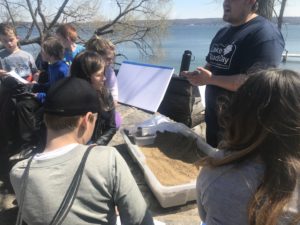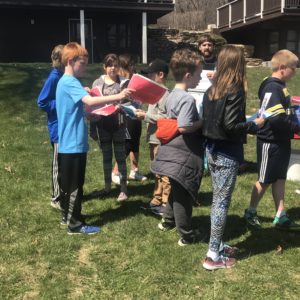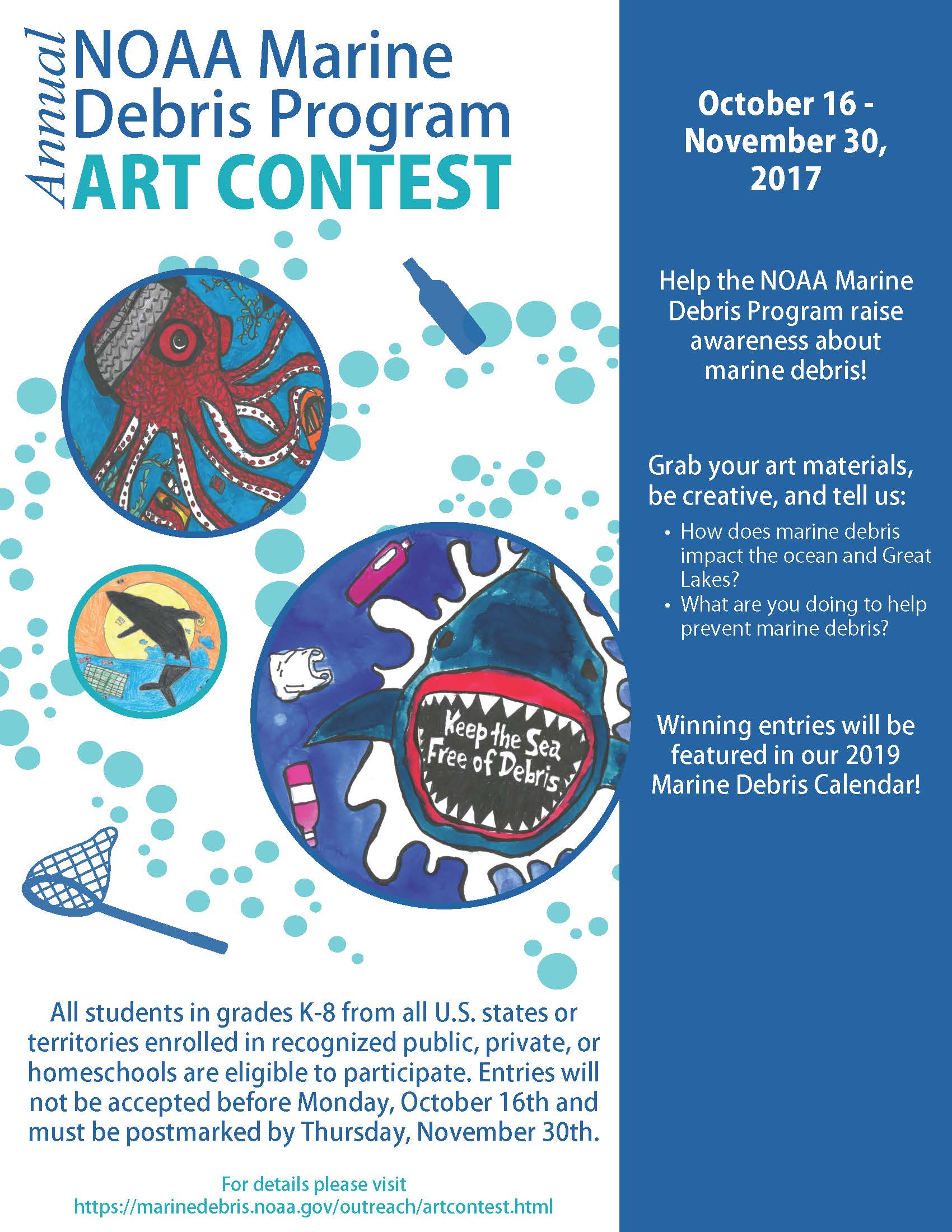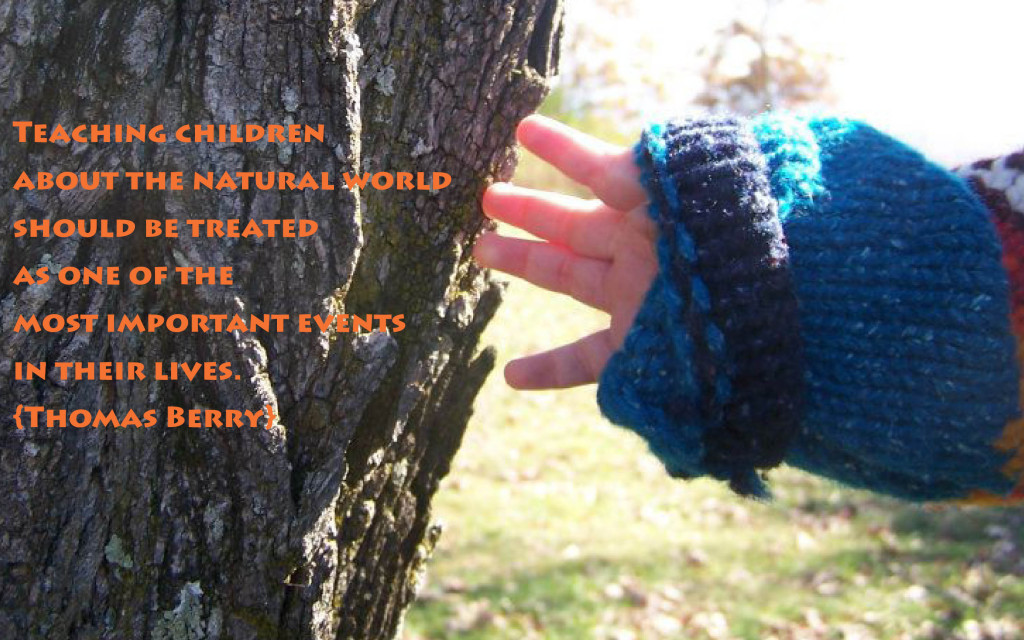The goal of any teacher or instructor is to have participants demonstrate a transfer of understanding. That is just what Chris Wells did with the college students enrolled in his Outdoor Education class during Lake Study Day at George Williams College of Aurora University in Lake Geneva, WI on April 25, 2018.
Five students were given the opportunity to create a meaningful lesson plan on an environmental or outdoor education topic of their choice. The nature of these lesson plans could be ANYTHING! What the students came up with really was impressive (more below in the captions). I was grateful because each of the fifteen-minute lessons were engaging and you didn’t need a whole lot of prior knowledge to get the objectives of the lesson. But, what was really impressive was how the these college students demonstrated a knowledge of their audience (fourth graders). The college students worked to create relevance for the fourth graders with contemporary analogies, focusing on tangible and measurable outcomes, and remained positive and professional. The objective for the day was not for the fourth graders to learn about certain topics (a nice byproduct, of course!) but mostly for the college students to demonstrate their ability to teach and instruct others. The ability to teach in an engaging manner can certainly be modeled time and time again with “in front of the class” presentations, but to truly master instructing others – direct practice is what matters.
Below are three of the five student presentations (They were are amazing, but my camera was the most cooperative). Check out the complete Lake Study Day 2018 Program for more details.

T.J. Bodoshuk used a huge cardboard constructed model (that he made himself!) as well as sand in an ‘under the bed’ type storage container to illustrate how land and the glaciers of the Great Lakes region have changed over time. The students were given a map and followed his models to create their own topographic maps. That the students will be able to recite the story of their ecosystem using this takeaway as a tool is impressive!

Matthew Wright demonstrated what it means for oxygen to be dissolved in water with the use of colorful molecules. He also provided a overview of how oxygen gets in water and why it’s necessary. Explaining any sort of small molecule can be a bit tough for elementary students but this presentation was very engaging and the fourth graders enthusiastically shared their understanding of air – not an easy task!

Timothy Helners had fourth graders practice throwing ropes in an “overboard scenario”. He explained the benefits and challenges to different rope types and what to do to accomplish control. I honestly was shocked that this was as successful as it was and the fourth graders mastered this so quickly!











What people are saying …